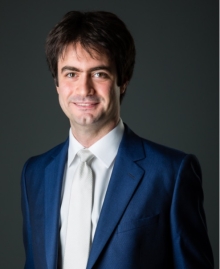

Biomedical Engineering research
Explore our work in this area of Mechanical Engineering expertise
We're working at the interface of engineering, life sciences and biomedical sciences to deliver research with socioeconomic impact – including health technology and bio-inspired materials.
One particular area of impact is in meeting the challenges posed by an ageing global population. Our research embraces the UK government's Industrial Strategy in enhancing healthy ageing. Recent projects have seen us develop innovative health technologies, bio-inspired materials and medical implants which will significantly improve clinical care and help promote clinical excellence.
Our multidisciplinary research focuses on the key topics of musculoskeletal biomechanics, cardiovascular engineering and biomedical imaging (and a range of sub-topics, outlined below) – and the outputs of our work are frequently published in leading journals within the field, including Health Technology, Scientific Reports, Age and Ageing, Clinical Biomechanics, and the Journal of Mechanical Behaviour of Biomedical Materials.
Our research covers the following key sub-topics
- Biomechanics
- Bio-inspired structure
- Bone Mechanics
- Cardiovascular Mechanics
- Computational Mechanics
- Computational modelling in biological structure
- Continuum Mechanics
- Health technology
- Hemodynamics
- Hyper-elastic Materials
- Image Processing
- Medical Devices
Facilities
Our facilities include the latest in manufacturing technology, such as 3D printing (multimaterial and laser sintering).
The University is also home to new bespoke biaxial mechanical testing systems for studying soft tissue mechanics, and a range of low energy bluetooth wearable sensors – including accelerometers, oximeters and electromoygraphic sensors – which will allow us to develop mobile healthcare technologies for various healthcare applications.
The Future Technology Centre also supports the work we're doing in 3D microCT imaging and numerical/FE modelling
Partnerships and collaborations
Our key strategic partners include:
- Diamond Light Source
- Carl Zeiss Ltd
- GlaxoSmithKlein
- The National Heart and Lung Institute, London
- The Royal National Orthopaedic Hospital, London
- Queen Alexandra Hospital, Portsmouth
Funding
Recent research projects have attracted funding from the Royal Society, Leverhulme Trust, and research councils such as the Engineering and Physical Sciences Research Council (EPSRC), Science and Technology Facilities Council (STFC), and Innovate UK. Our work has also received funding support from organisations within the industrial sector, such as Zeiss, and Glaxo-Smith-Kline. We engaged Small and Medium Enterprises to develop new products and help them to expand their market revenues.
Recent publication highlights include
-
Damage as a material phase transition
Bucchi, A, De Tommasi, D, Puglisi, G & Saccomandi, G 2023, Journal of Elasticity. https://doi.org/10.1007/s10659-023-10014-z
-
Large isotropic elastic deformations: on a comprehensive model to correlate the theory and experiments for incompressible rubber-like materials
Anssari-Benam, A 2023, Journal of Elasticity. https://doi.org/10.1007/s10659-022-09982-5
-
A new dissipation function to model the rate-dependent mechanical behaviour of semilunar valve leaflets
Anssari-Benam, A, Tseng, Y-T, Pani, M & Bucchi, A 2023, Journal of Biomechanical Engineering. https://doi.org/10.1115/1.4056917
-
Open-porous magnesium-based scaffolds withstand in vitro corrosion under cyclic loading: a mechanistic study
Bonithon, R, Lupton, C, Roldo, M, Dunlop, JN, Blunn, GW, Witte, F & Tozzi, G 2023, Bioactive Materials, vol. 19, pp. 406-417. https://doi.org/10.1016/j.bioactmat.2022.04.012
-
Effect of radiation-induced damage of trabecular bone tissue evaluated using indentation and digital volume correlation
Karali, A, Dall'Ara, E, Zekonyte, J, Kao, AP, Blunn, G & Tozzi, G 2023, Journal of the Mechanical Behavior of Biomedical Materials, vol. 138, 105636. https://doi.org/10.1016/j.jmbbm.2022.105636
-
Helically arranged cross struts in azhdarchid pterosaur cervical vertebrae and their biomechanical implications
Williams, CJ, Pani, M, Bucchi, A, Smith, RE, Kao, A, Keeble, W, Ibrahim, N & Martill, DM 2021, iScience, vol. 24, no. 4, 102338. https://doi.org/10.1016/j.isci.2021.102338
-
Opposing patterns in self-reported and measured physical activity levels in middle-aged adults
Luo, J & Lee, RYW 2021, European Journal of Ageing. https://doi.org/10.1007/s10433-021-00657-z
-
Effect of damping on waypoint tracking control of an underactuated small robotic boat
Huang, Y & Yu, H 2021, International Journal of Intelligent Control and Systems, vol. 1, no. 2, pp. 10-18.
Discover our areas of expertise
Biomedical engineering is one of our two areas of research expertise in Mechanical Engineering - explore the other, below.
Materials Engineering

Research groups
-
Biomedical Engineering Research Group
We're researching how to better understand the body through imaging and biomechanics.
-
Future Technology Centre
We're researching the competence of biological structures, biomaterials, and bio-inspired engineering materials using advanced X-Ray microscopy.
Interested in a PhD in Mechanical & Design Engineering?
Browse our postgraduate research degrees – including PhDs and MPhils – at our Mechanical & Design Engineering postgraduate research degrees page.






